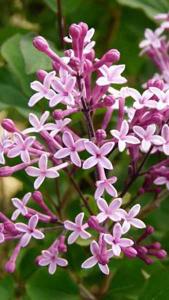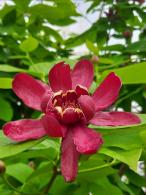Syringa Microphylla Red Pixie Lilac
Sweetly-Scented Pink Flowers
1. Add items to basket
2. Go to the basket
3. Enter your postcode in Delivery Price Check
Syringa Microphylla Red Pixie is a compact deciduous shrub with woody stems and sprays of pink tubular flowers in late spring and early autumn.
Syringa Microphylla is native to northern China, but the variety Red Pixie is mostly likely a seedling of Syringa Julianae 'Hers' and Syringa Meyeri. It grows in a neat compact bushy shape with spreading branches. Ovate foliage appears light green in spring maturing to mid-green over summer. In autumn the leaves turn yellow and fall with the frosts. In late spring spectacular flowers appear. The blooms are dense tubular sprays of red buds that open to deep pink before fading to pale pink. The flower sprays are lightly scented and attract lots of pollinators. Throughout summer sporadic flowers appear and in late summer or early autumn a second flush brightens a fading garden.
Height And Spread of Syringa Microphylla Red Pixie
This is a compact bushy dwarf lilac that will reach a height and spread of 1.5 metres.
How Hardy Is Syringa Microphylla Red Pixie
If grown in well drained soils Lilac Red Pixie withstands sub-zero winters. Once established it is reasonably drought tolerant.
How To Use Syringa Microphylla Red Pixie
A good choice for low maintenance borders and cottage style gardens, Lilac Red Pixie’s pretty pink sprays attract lots of pollinators and provide colour early and late in the season.
You can grow this shrub in a well-watered and fed plant container to brighten up a dull patio, deck, or balcony garden. Urban and courtyard spaces benefit from its soft shape and sweet-scented fragrance.
How To Care For Syringa Microphylla Red Pixie
Lilac Red Pixie prefers full sun but will tolerate partial shade. It does best in moist but well drained neutral to alkaline soils in a sheltered spot.
You can leave this shrub to its own devices or gently prune it back in late summer to maintain a neat shape.
Water well until established and apply a thick layer of mulch to the roots in early spring to trap moisture and provide nutrients for the growing season.











